
URBAN ECOLOGICAL MELODY
Photo Credit: CC Qian
Media: Please submit high-resolution image requests to images@asla.org.
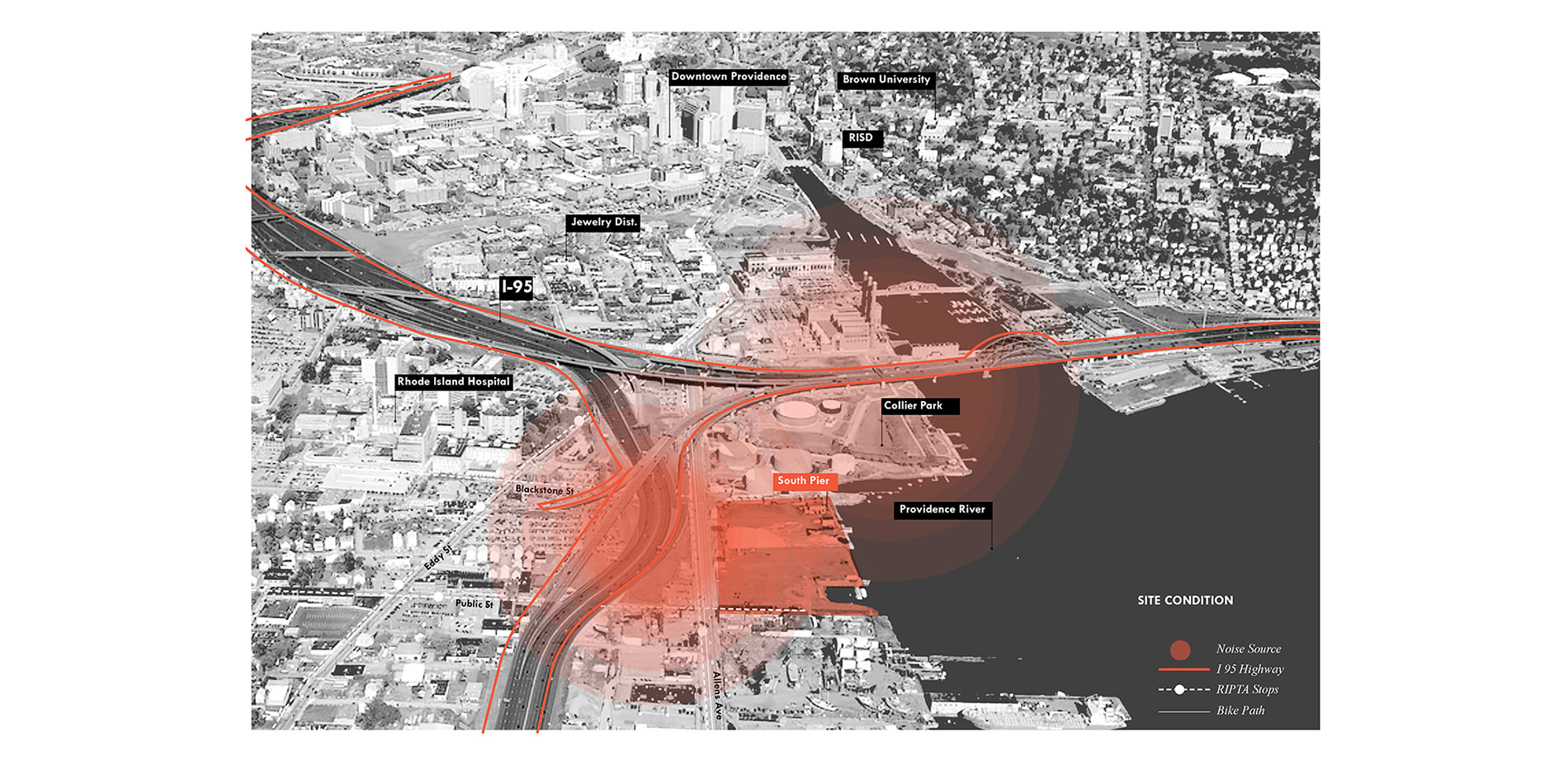
Located one mile south of Downtown Providence, the South Pier was seperated from neighborhood by I-95 highway. Noise predominates the vacant site which used to be an industrial pier.
Photo Credit: CC Qian
Media: Please submit high-resolution image requests to images@asla.org.
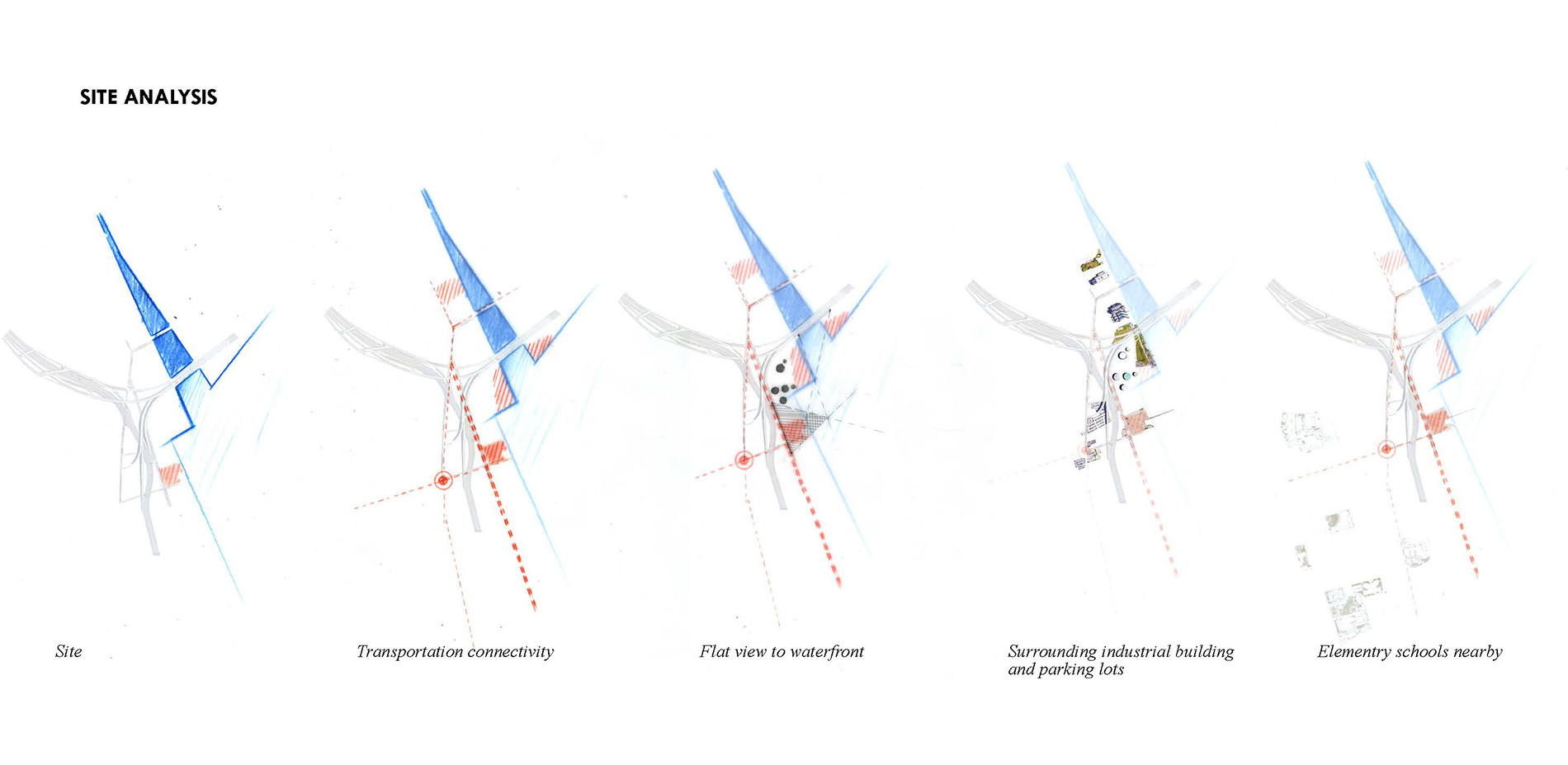
Drawings of accessibility to identity site opportunities.
Photo Credit: CC Qian
Media: Please submit high-resolution image requests to images@asla.org.
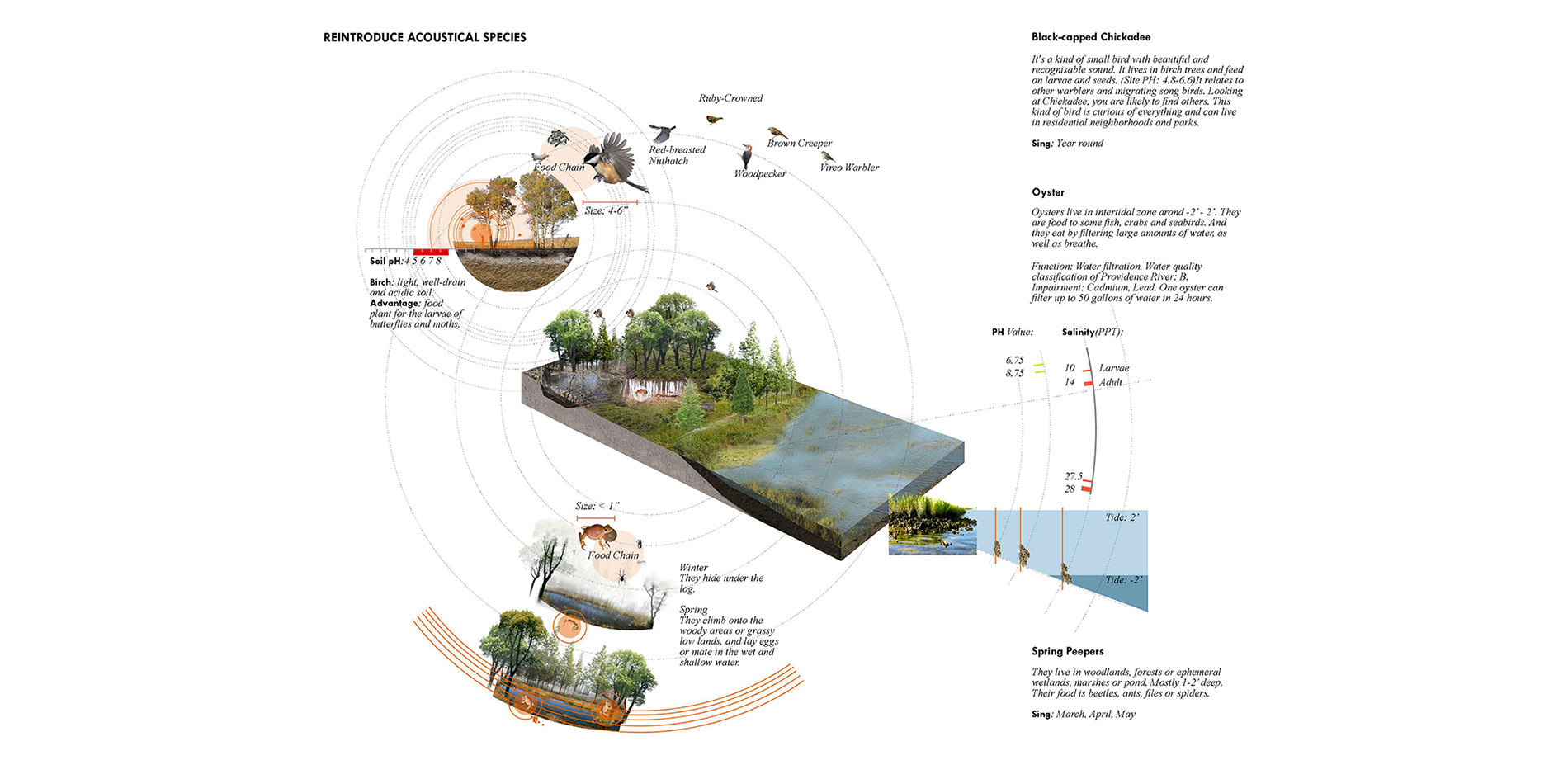
Reintroduce acoustical species by creating food and shelter for each.
Photo Credit: CC Qian
Media: Please submit high-resolution image requests to images@asla.org.
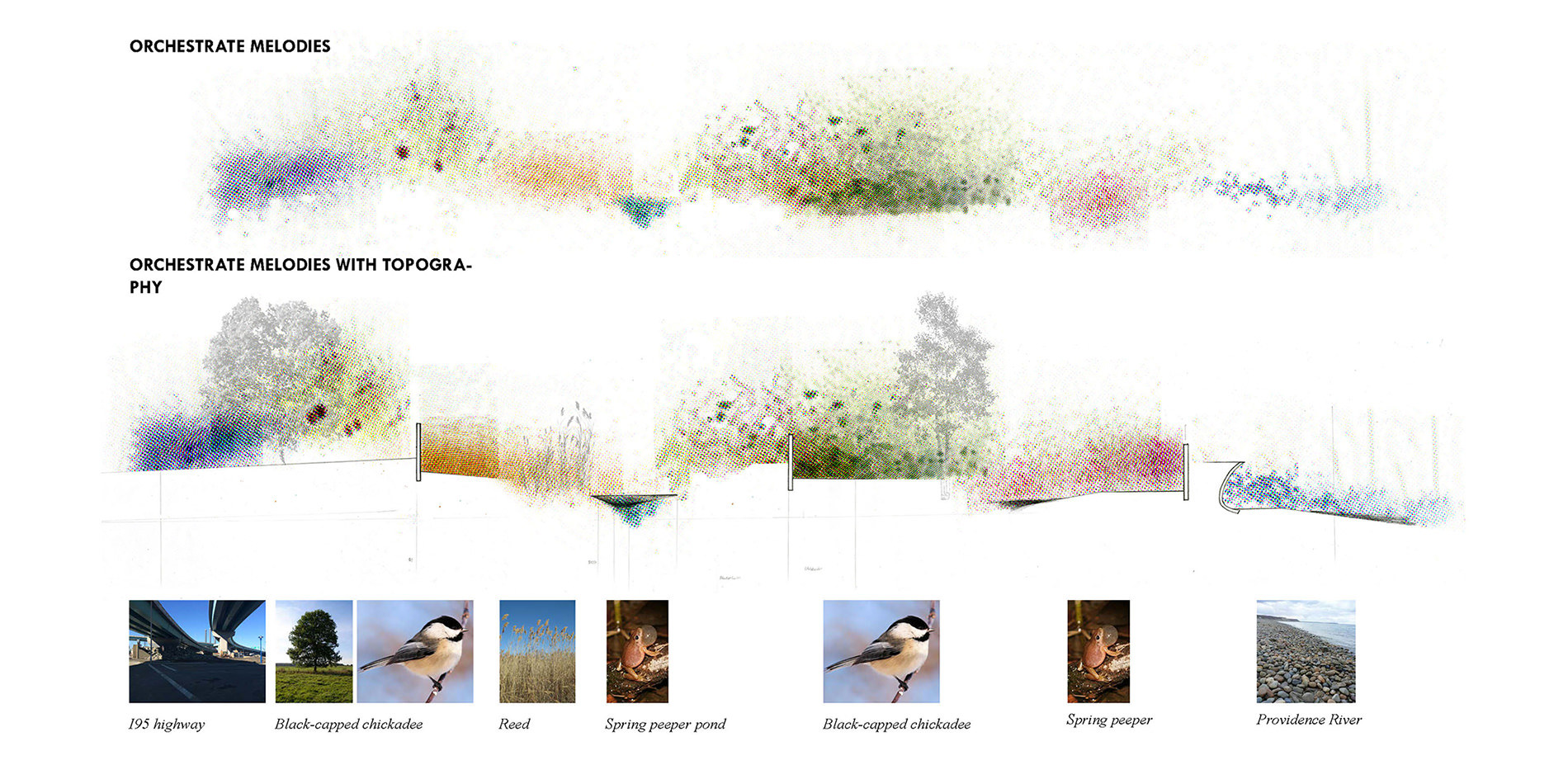
Organize the sequence of different sounds and cooperate them with designed topography.
Photo Credit: CC Qian
Media: Please submit high-resolution image requests to images@asla.org.

South Pier Master Plan
Photo Credit: CC Qian
Media: Please submit high-resolution image requests to images@asla.org.
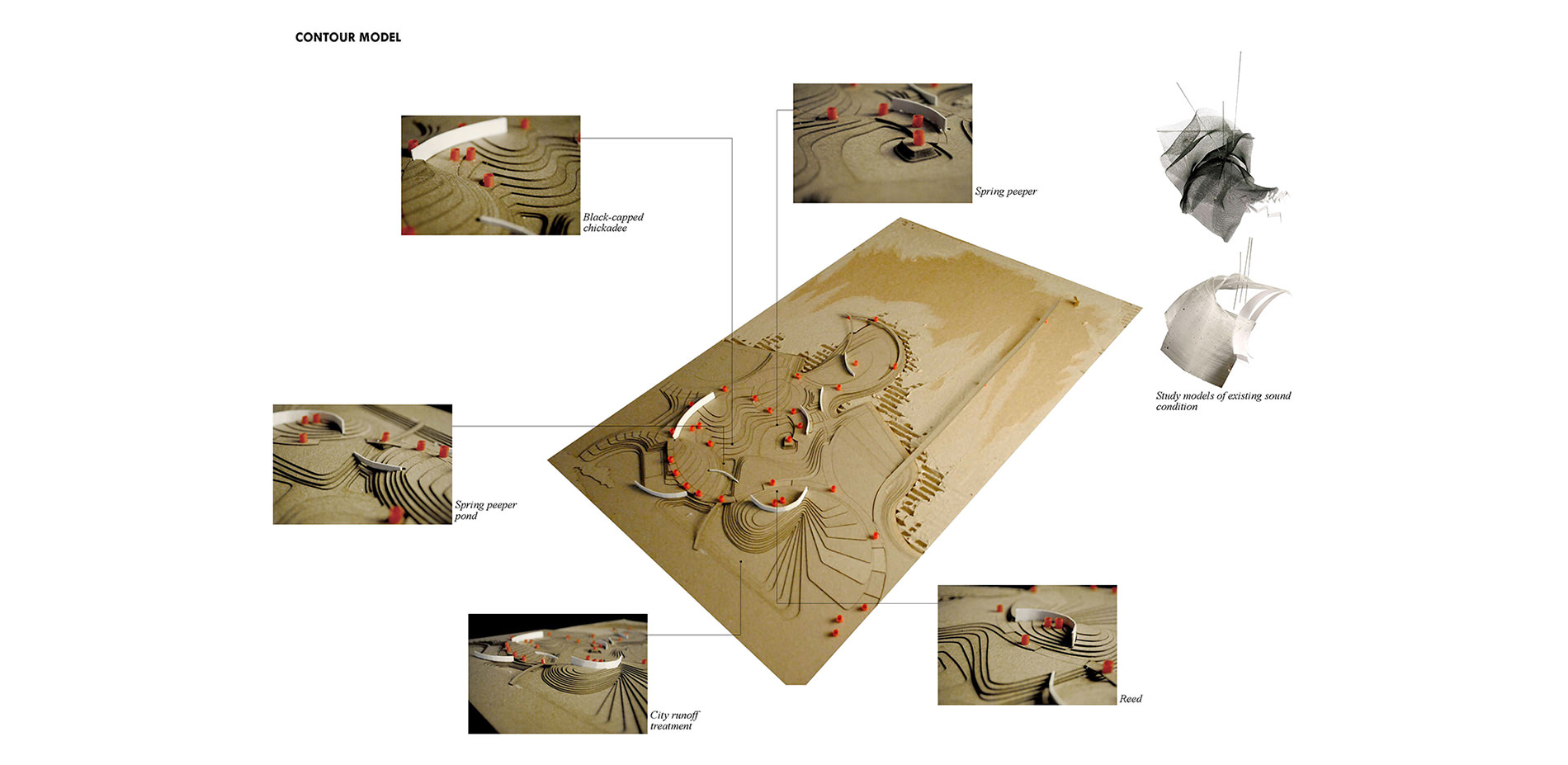
Multifunctional parabolic walls work with topography creating not only gathering places but also collecting city runoff.
Photo Credit: CC Qian
Media: Please submit high-resolution image requests to images@asla.org.
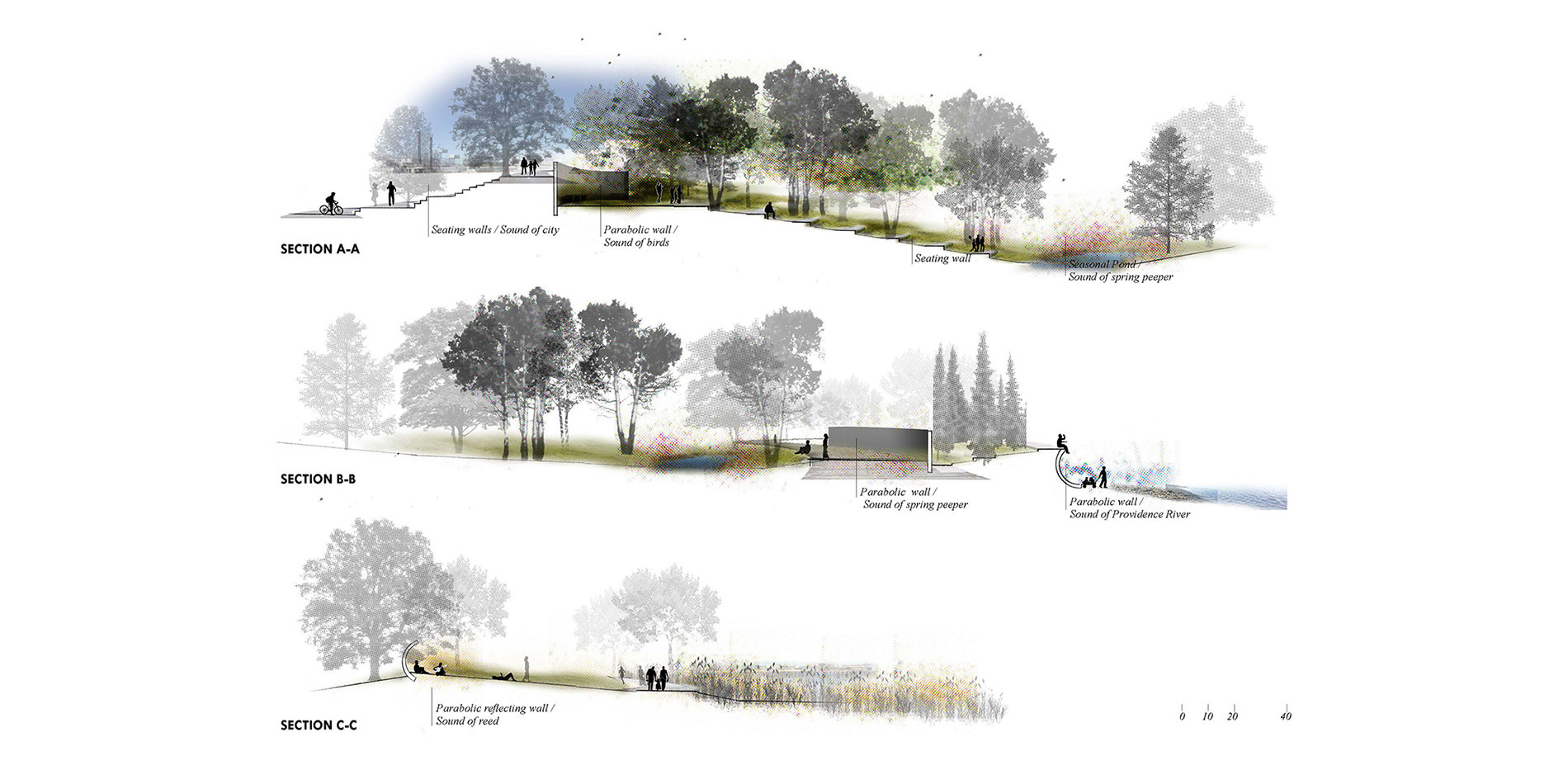
Space with different sound qulities and topographic change.
Photo Credit: CC Qian
Media: Please submit high-resolution image requests to images@asla.org.
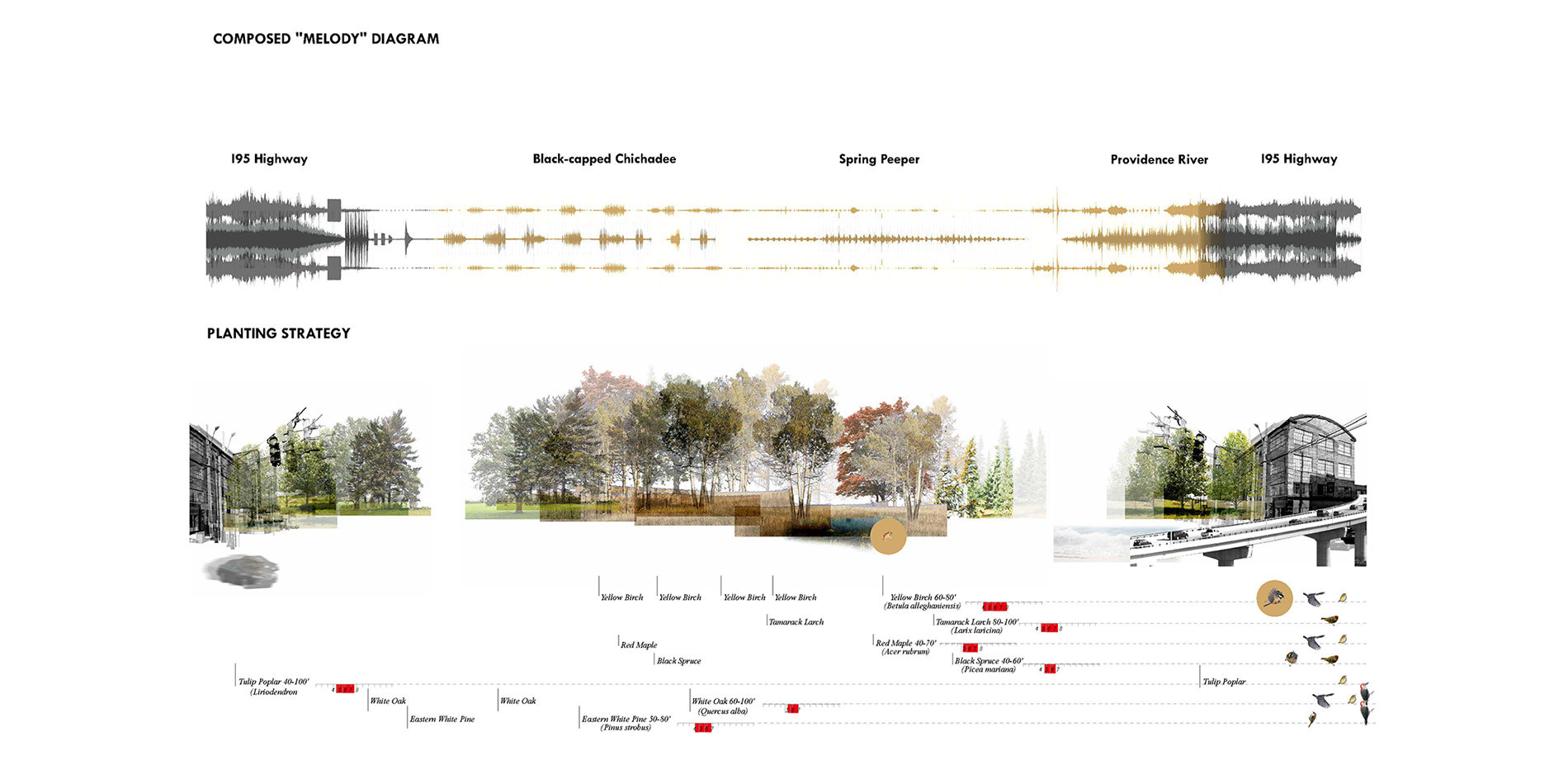
Visualizing sound effects of black-capped chickadee which has stronger rhythm than others'. Spring peeper's voice also contrasts with chickadee.
Photo Credit: CC Qian
Media: Please submit high-resolution image requests to images@asla.org.

Not only provide a sequence of different sound when people navigating the park, but also use concrete parabolic wall to reflect and amplify certain sound.
Photo Credit: CC Qian
Media: Please submit high-resolution image requests to images@asla.org.
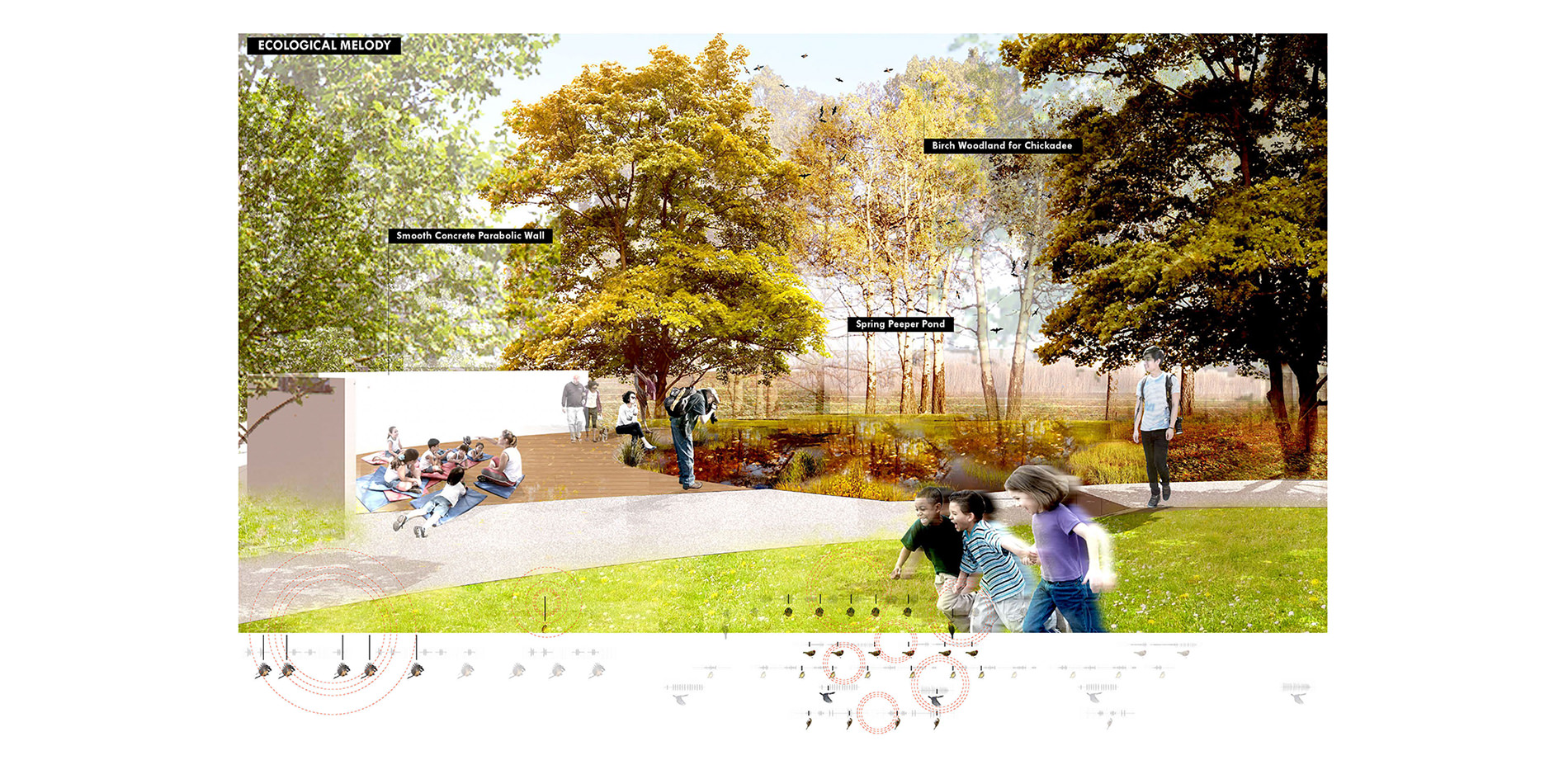
Ecological melodies of spring peeper pond.
Photo Credit: CC Qian
Media: Please submit high-resolution image requests to images@asla.org.
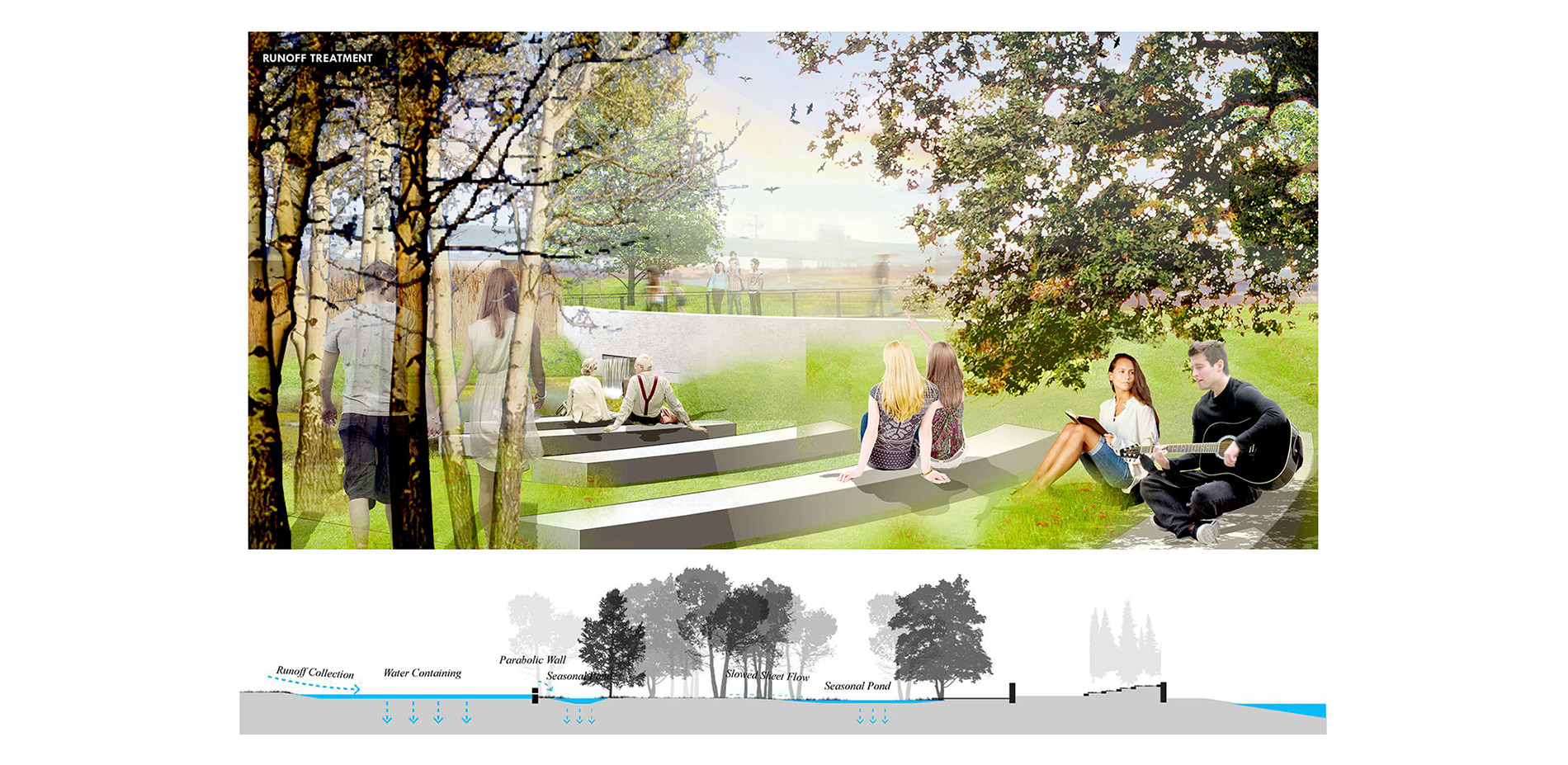
City runoff are collected and treated to maintain the required 1-2" deep pond for spring peeper's habitat.
Photo Credit: CC Qian
Media: Please submit high-resolution image requests to images@asla.org.















